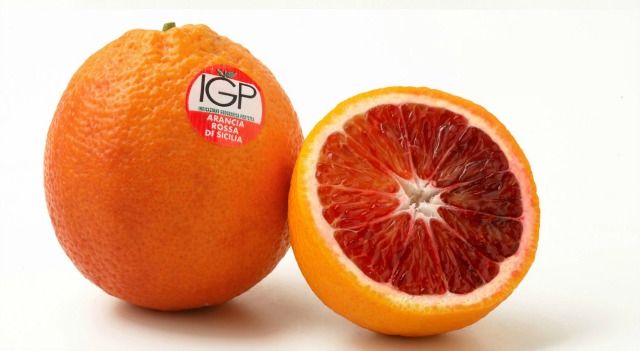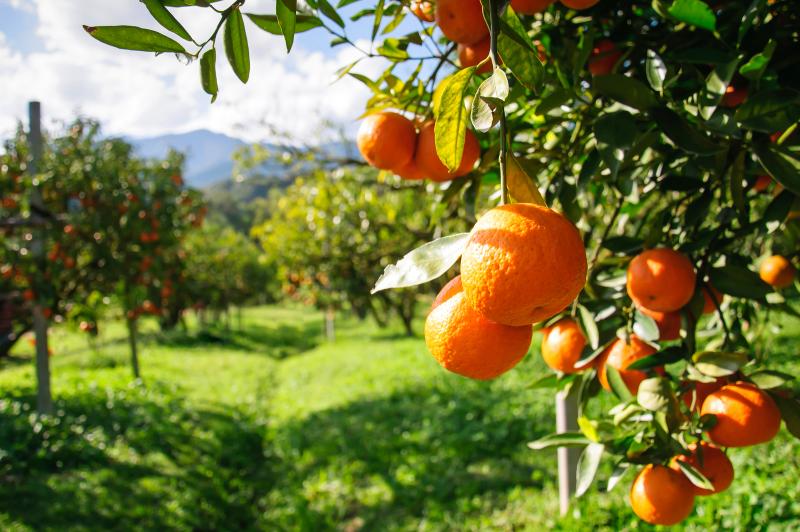Italians are Europe's number one consumers of fresh fruit. Every year, on average, Italians consume 157 kg of fruit per capita against the 94 kg of other EU citizens. Oranges, together with apples, are the most favourite fruit in the country and are considered by many the best remedy against winter's cold and flu, just the perfect natural vitamin c source.
After Spain, Italy is also the second oranges producer country in Europe, covering 35% percent of the European market, with Sicily being the national top producer region (54% of national production) followed by Calabria, Basilicata, Puglia and Sardinia. Italy offers a great variety of high quality blond and blood oranges, international variety like Navel, known also as Washington, Valencia and Belladonna, but the most renown kinds are the local varieties with IGP label (Indicazione Geografica Protetta): Arance del Gargano and Arance Rosse di Sicilia (Tarocco, Moro and Sanguinello).
Arance del Gargano IGP

The Gargano peninsula in Apulia, is the only orange producing area on the Adriatic coast of Italy, with Vico and Ischitella being the two main orange producing towns.
The Arancia del Gargano IGP is a blond orange with a sweet flesh, whose main characteristic is that of keeping firm and juicy for several days after being collected. These features made this variety very popular, and in the past they were chosen to be sent to the USA, to Chicago or New York, because they arrived in excellent conditions even after a 30/40-day trip.
They start ripening in late April and are collected until May, but can be found in the market until September.
Arance Rosse di Sicilia IGP
 The category Arancia Rossa di Sicilia includes the three orange varieties: Tarocco, Moro and Sanguinello.
The category Arancia Rossa di Sicilia includes the three orange varieties: Tarocco, Moro and Sanguinello.
The production of this kind of oranges is strongly linked to the terroir of the Piana di Catania (Catania, Siracuse and Enna), its soil and weather conditions. It seems that when attempting to cultivate the same variety of orange trees in other places, the fruits produced do not present the same characteristics, the same deep red colour.
The Arancia Rossa has a low sugar level and is rich in vitamins (C, B1, B2, A), great for the digestive and metabolic systems; its antioxidants (anthocyanins) help prevent infections, colds and have anti-tumor features. It is particularly good for children, people with health problems and the elderly. Like with radicchio, it is the deep red colour that indicates a higher content of antioxidant properties (anthocyanins), so it is not a simple matter of look.
If you want to be sure you are buying the real IGP product, the denomination "Arancia Rossa di Sicilia" must be displayed on the packaging, immediately followed by the indication of the specific variety (Tarocco, Moro or Sanguinello).
Tarocco

The Tarocco is the most popular table orange in Italy and is the sweetest and most flavorful of the three types of Sicilian blood oranges.
Tarocco probably derived from a mutation of the "Sanguinello" discovered in a citrus garden in the town of Francofonte between the 19th and 20th century. It is referred to as "half-blood", because the flesh does not have a very red pigmentation as much as with the Moro and Sanguinello varieties. It presents a thin skin, slightly blushed in red tones, and a blond pulp with a light red pigmentation and no seeds.
It has the highest Vitamin C content of any orange variety grown in the world, mainly on account of the fertile volcanic soil surrounding Mount Etna.
It is available on the market from mid-December to May.
Moro

The Moro cultivation started at the beginning of the 19th century in the citrus-growing area around Lentini (in the Province of Syracuse) and, today, this variety is also cultivated in other areas around Catania and Siracusa. It is the most colorful of the three types, a "full-blood" orange. The colour of the flesh ranges from orange with ruby pigmentation, to vermilion, to deep purple and nearly black. The thick orange-colored peel has a medium fine grain with spots or red purple veins. Slightly more citrusy with a hint of raspberry, it has a stronger flavour than a common orange.
It is available on the market from early December to March.
Sanguinello

The Sanguinello was first discovered in Spain in 1929 and is now widely grown in the citrus gardens around Catania and Syracuse.
It is a "full-blood" orange, with very similar characteristics to the Moro variety. The peel is clear yellow with a red tinge and the flesh is orange with multiple deep red-colored and purple veins. It has few seeds and a sweeter taste than the Moro.
It is available from February to April.
Do not miss the chance to enjoy one of these kinds of oranges, they taste great and are a natural health booster. The perfect snack for children, a great drink (their juice is simply fantastic) and if you have time to cook, they are also a wonderful ingredient for both savoury or sweet dishes.



